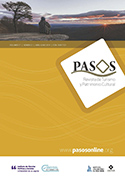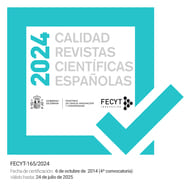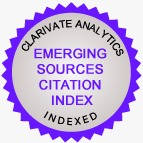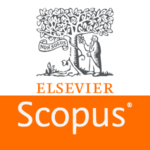The Dominican route as a tourist attraction in Amarante and Baião (North of Portugal)
DOI:
https://doi.org/10.25145/j.pasos.2019.17.018Keywords:
Tourism, Route, Arte, Dominicanos, DesenvolvimentoAbstract
The religious orders stood out in the quality of the search for places for the monastic groups, in the name of faith, culture and the aggregation of populations. The route focuses on the Dominican root temples (S. Gonçalo and S. Domingos, Amarante) and the absorption of others (Mancelos and Freixo de Baixo, Amarante, and Ancede, Baião). In Amarante, art follows the treatment of the different stylistic phases of the best artists of the Porto and Braga schools. We glimpse styles from Mannerism to Neoclassical. Objectives: to associate the route to the potentialities of the region - gastronomic, cultural and nature tourism, good accessibility and accommodation conditions and the connection with the Romanesque Route of Tâmega e Sousa and Douro Sul. As a route argument, the methodology was based on the literature of the author and researchers linked to the currents of art and religious tourism, with a subsequent work with a survey, highlighted in the conclusion.
Downloads
Publication Facts
Reviewer profiles N/A
Author statements
- Academic society
- PASOS. Revista de Turismo y Patrimonio Cultural
- Publisher
- Instituto Universitario de Investigación Social y Turismo. Universidad de La Laguna (España) - Instituto Universitario da Maia ISMAI (Portugal)
References
Borges, Nelson Correia. 1993. “Do Barroco ao Rococó” in Borges, Nelson Correia, dir. de, História da Arte em Portugal, vol. 9.
Botelho, Leonor & Resende, Nuno. 2014. Rota do Românico, coord. de Rosas, Lúcia, vol. I. Lousada: Centro de Estudos do Românico e do Território.
Brandão, Domingos de Pinho. 1986. Obra de Talha Dourada, Ensamblagem e Pintura na Cidade e Diocese do Porto, III. Porto: Tellos Editora.
Capela da Senhora do Bom Despacho. s.d. Em http://terralusa.net/index.php?site=213&sec=part5 (acessível: 15 setembro 2014).
Carreira, Paula Cristina Ferreira da Costa. s.d. Dominicanos: Breve História da Fundação da Ordem dos Pregadores. Em http://www.op.org/default.htm (acessível: 2 outubro 2014).
Direção Geral do Património Cultural. s.d. Em http://patrimoniocultural.pt/pt/museus‑e‑monumentos/
dgpc/ (acessível: 15 setembro 2014).
Dominicanos (Os) em Portugal. s.d. Em http://dominicanos.pmeevolution.com/ (acessível: 3 agosto 2014).
Ferreira‑Alves, Natália Marinho. 2001. A Escola da Talha Portuense e a sua Influência no Norte de Portugal. Lisboa: Edições Inapa.
Gonçalo, Amaro & Coutinho, Luís. 2001. Igrejas de Amarante. São Gonçalo. São Pedro. Nossa Senhora dos Aflitos. Amarante: Paróquia de Amarante (São Gonçalo).
Lagoa, Maria J. & Dias, J. P. 1991. “Ancede: Capela da Senhora do Bom Despacho” in Atas do I Congresso Internacional do Barroco (pp. 467‑480). Porto: Reitoria da Universidade do Porto.
Marques, João Francisco. 1993. “Franciscanos e Dominicanos Confessores dos Reis Portugueses das duas Primeiras Dinastias. Espiritualidade e Política” in Livro de Atas de Conferência Nacional (pp. 53‑60). Em http://hdl.handle. net/10216/8336 (acessível: 13 agosto 2012).
Reinhardt, Ursula. 1992. “Achante“ in Gruber, Alain ‑ L´Art Décoratif en Europe Classique et Baroque. Paris: Éditions Citadelles et Mazenod.
Rodrigues, J. C. Meneses. 2004. Retábulos no Baixo Tâmega e no Vale do Sousa (Amarante, Felgueiras, Marco de Canaveses e Penafiel). Do Maneirismo ao Neoclássico – Séculos XVII – XIX), vol. I. Tese de doutoramento. Porto: FLUP. Em http://hdl.handle.net/10216/14303 (acessível: 2 agosto 2014).
Rodrigues, J. C. Meneses. 2011. “Imagens da Devoção Nacional em Retábulos do Baixo Tâmega e do Vale do Sousa”. Iconografia Religiosa das Invocações Nacionais. Cultura. Revista de História e Teoria das Ideias, 27, II Série (pp. 25‑39). Lisboa: Centro de História da Cultura da UNL, Edições Húmus.
Rolo, Raul A. 2000. “Dominicanos” in Azevedo, Carlos Moreira (Dir.) ‑ Dicionário de História Religiosa de Portugal, vol. II (pp. 82‑88.). Rio de Mouro: C. Leitores SA e Centro de Estudos da História Religiosa da Universidade Católica Portuguesa.
Rosas, Lúcia; Botelho, Leonor & Resende, Nuno. 2014. Rota do Românico, coord. de Rosas, Lúcia, vol. I. Lousada: Centro de Estudos do Românico e do Território.
Santos Dominicanos (Todos os). Em http://artereligiao.blogspot.com.br/2011/11/7‑de‑novembro‑todos‑os‑santos. html (acessível: 12 setembro 2014).
Sardoeira, Albano. 1957. “Notícia de alguns artistas que trabalharam em Amarante”. Separata do Boletim Douro Litoral, Oitava Série, n.os III‑IV.
Porto: (s. e.).
Vieira, João &, Lacerda, Manuel, coord. de 2010. KIT05 Património Arquitetónico. Edifícios Conventuais Capuchos. Lisboa: IHRU, IGESPAR. Em http: //www.igespar.pt/media/docs/2010/12/22/KIT05.pdf (acessível: 07 agosto 2012).
Downloads
Published
How to Cite
Issue
Section
License
I confirm that the work is original (of my/our authorship), and that it will not be submitted to other journals or publications until the final resolution of the review process in PASOS, RTPC.
I authorize the publication of my work by PASOS, PSTN of free and open access in any of the formats that I deem appropriate, for an indefinite period of time and as a non-remunerated collaboration.
Likewise, the author(s) understands that the published work may be linked or deposited on any server or included in other publications (republication), provided that the new place and/or new edition references the original publication and acknowledges the authorship and copyright ownership of PASOS RTPC publications.
Authors understand that a plagiarism-self-plagiarism check will be performed, and the article may be removed at any time from the editorial flow.










